Vigil Blu-ray Movie
HomeVigil Blu-ray Movie 
Arrow | 1984 | 90 min | Not rated | Jun 26, 2018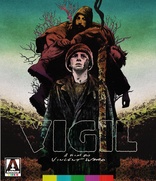
Movie rating
6.4 | / 10 |
Blu-ray rating
| Users | 0.0 | |
| Reviewer | 4.0 | |
| Overall | 4.0 |
Overview
Vigil (1984)
In a remote valley a farmer dies. In his wake comes a hunter. The farmer's daughter watches him. He starts a relationship with her mother and helps her grandfather to build a strange new invention. To the child, he is a predator. She must expel him from her valley.
Starring: Penelope Stewart, Frank Whitten, Bill KerrDirector: Vincent Ward
| Drama | 100% |
Specifications
Video
Video codec: MPEG-4 AVC
Video resolution: 1080p
Aspect ratio: 1.85:1
Original aspect ratio: 1.85:1
Audio
English: LPCM Mono (48kHz, 24-bit)
BDInfo
Subtitles
English SDH
Discs
Blu-ray Disc
Single disc (1 BD)
Playback
Region A (B, C untested)
Review
Rating summary
| Movie | 4.0 | |
| Video | 4.5 | |
| Audio | 4.0 | |
| Extras | 1.5 | |
| Overall | 4.0 |
Vigil Blu-ray Movie Review
Reviewed by Jeffrey Kauffman June 25, 20181962 was a really interesting year in the annals of film for a variety of reasons. Huge epics were still drawing considerable crowds to theaters, as evidenced by the top grossing film of that year, David Lean’s immortal Lawrence of Arabia. Other epics did at least reasonably well that year, including Lawrence’s follow up in the Number 2 position, The Longest Day, and even a highly troubled production that still made that year’s Top 10 (in position 6), the Marlon Brando version of Mutiny on the Bounty. That year’s Top 20 saw a number of other iconic entries, including two films that might each be considered sui generis, the political thriller The Manchurian Candidate and the showbiz sendup (which was also a thriller in its own way) What Ever Happened to Baby Jane? . Two ostensibly “smaller” films also made the Top 20, and they share one other salient element, one that pertains in a way to Vigil, an interesting if flawed 1984 New Zealand film from Vincent Ward that was the first offering from the nation to compete at Cannes. The Oscar nominations for Best Supporting Actress for films released in 1962 pitted two very young female performers against each other, Mary Badham, who portrayed the inimitable Scout in To Kill a Mockingbird (at that point in time, the youngest ever nominee in that particular category), and eventual winner Patty Duke, who of course gave an unforgettable performance as Helen Keller in The Miracle Worker. Both of these characterizations have rightly gone down in history as among the finest child (and/or youth) work ever captured on celluloid, and both continue to move audiences to this day. Duke went on to a long and storied (if sometimes troubled, as evidenced by her own confessional memoirs) career, but somewhat strangely Badham never really capitalized on her incredible feature film debut, instead following up the legendary Harper Lee tale with a few television appearances and a couple more film roles before largely disappearing from view. Something somewhat similar seems to have happened to Fiona Kay, the remarkable (then) young actress who is front and center throughout Vigil, in a performance that I personally would rank as near equal to that of either Duke or Badham, in a role that requires her to traverse a rather wide range of emotions and motivations. According to the IMDb, Kay (who, like Badham and Duke in those aforementioned films, made her feature film debut in this role) appeared in only one feature film after Vigil, Jane Campion’s strangely underrated An Angel at My Table, a film which came out several years after Vigil (the IMDb does show a couple of interstitial shorts and/or television roles that Kay also did).
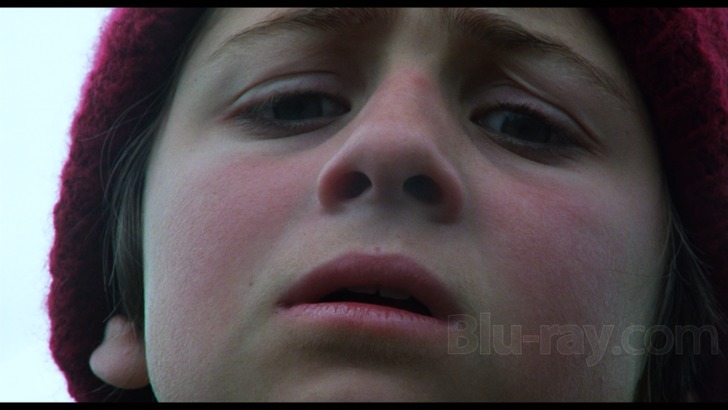
There’s another link between the character Kay plays in Vigil and the one Badham played in To Kill a Mockingbird, in that both young girls are known by nicknames. Kay portrays Lisa Peers, the daughter of Justin (Gordon Shields) and Elizabeth Peers (Penelope Stewart), though she’s more often called Toss, a possible reference to her tomboyish proclivities. The Peers live on a gorgeous if isolated and somewhat dilapidated farm in the rural wilds of New Zealand, where the only other denizen initially seems to be Toss’ grandfather Birdie (Bill Kerr). It’s obviously a hardscrabble life, as is documented almost immediately, but Toss is an adventurous sort, as is also made clear when she manages to more or less surreptitiously escape the watchful eyes of her mother to accompany her father on a mission to rescue some lost sheep.
In just this opening sequence, Ward offers some absolutely stunning views of the rugged New Zealand terrain, a mountainous region which in fact proves perilous to Justin, who falls to his death while attempting to rescue a ram stuck partway down a cliff. Toss witnesses the fall, but she also sees a mysterious other man who has been hunting on the same precipice, a guy who actually carts her father’s body back to the Peers farm. Perhaps surprisingly, this stranger, Ethan Ruir (Frank Whitten), manages to finagle his way into a farmhand job, leading to a number of kind of roiling interpersonal exchanges with both Elizabeth and Toss. (As Nick Roddick mentions in his “appreciation” of the film included on this Blu-ray as a supplement, some of the sexual subtext here could probably not be released in today’s #metoo climate, even if nothing constituting actual abuse happens to Toss.)
But it’s also in this sexually charged element that I’m not sure the film ever firmly hits its desired emotional target. It’s kind of interesting to contrast some elements of Vigil with another Campion film, arguably her best known, The Piano. Both feature a mother and daughter in a roughhewn isolated landscape, with at least one threatening male glowering on the sidelines, and both stories hinge on the daughter’s reactions to events. But The Piano offered a concise and devastating narrative path, while Vigil tends to play out in a series of admittedly interconnected vignettes that nonetheless tend to wander a bit at times (some related to sidebars involving Birdie). (It should be noted that Roddick, who long championed Vigil and is a longtime friend of Ward's, states in the above referenced appreciation that Ward tends not to care about narrative all that much.)
What gives this film its undeniable power is the way Ward offers the “outback” of New Zealand as kind of a character in and of itself. The melding of the locale with the people attempting to live in it tends to define Vigil at least as much as Toss’ sexual awakenings as she enters puberty, or any of the arguably more “#metoo-esque” elements involving Elizabeth and Ethan. Ward’s filmography is actually kind of astounding, including directorial credits for films as disparate as The Navigator: A Medieval Odyssey (due very soon on Blu-ray from Arrow) and What Dreams May Come, a story credit for Alien³, and an Executive Producing credit for The Last Samurai. Vigil was Ward’s first feature outing as a co-writer and director, and while it arguably could have used a bit of focus in the writing department, the presentational aspects here are often awesome, in both senses of the word. Ward’s visual acuity suffuses this film and helps to elevate a sometimes tawdry story to almost mythic, or at least folkloristic, levels.
Vigil Blu-ray Movie, Video Quality 

Vigil is presented on Blu-ray courtesy of Arrow Video with an AVC encoded 1080p transfer in 1.85:1. Arrow's insert booklet contains (more or less) the same generic information that has been included on some of its other recent New Zealand based releases:
Vigil was digitally restored by the New Zealand Film Commission from original film elements. The restoration was supervised and approved by Vincent Ward. The film is presented in its original theatrical aspect ratio of 1.85:1 with mono sound.With a couple of minor exceptions (noted below), this is a really pleasing looking transfer, one that offers a really lush rendering of the film's often impressive palette, and one which circumscribes potential problem areas like mist strewn mountaintops with relative ease. Ward often indulges in (sometimes extreme) close-ups, especially with regard to Fiona Kay, and fine detail is typically excellent in these moments, easily offering the texture of the fabrics of the weird "ski mask" hats she wears. The film is also full of rather splendid scenic vistas, and depth of field is often quite impressive in these shots. There are occasional problems with shadow definition, and some moments look to have a just slightly bluish/purplish tinge to them (aside and apart from intentionally blue sequences like the one scene in screenshot 14 accompanying this review). There are also some tiny flecks that have made it past the restoration gauntlet, but you really have to keep your eyes peeled to notice them. Grain looks natural throughout the presentation and encounters no compression difficulties.
Vigil Blu-ray Movie, Audio Quality 
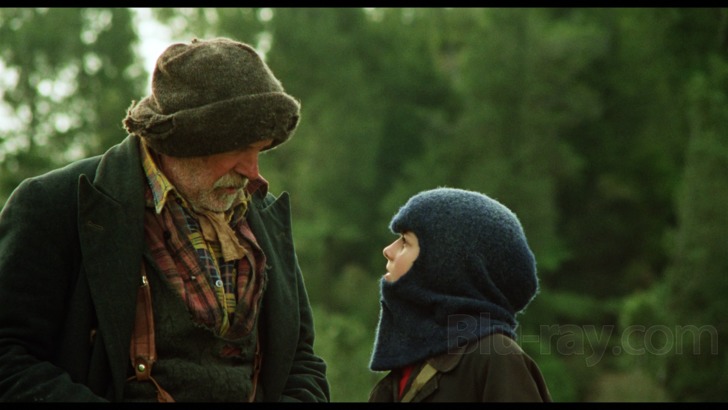
Vigil's LPCM 1.0 track is understandably narrow sounding, but it has sometimes surprising depth, with layers of dialogue and ambient environmental effects rather nicely prioritized throughout. The film's enjoyable score by Jack Body sounds full bodied, and there are no problems with dropouts, distortion or damage.
Vigil Blu-ray Movie, Special Features and Extras 
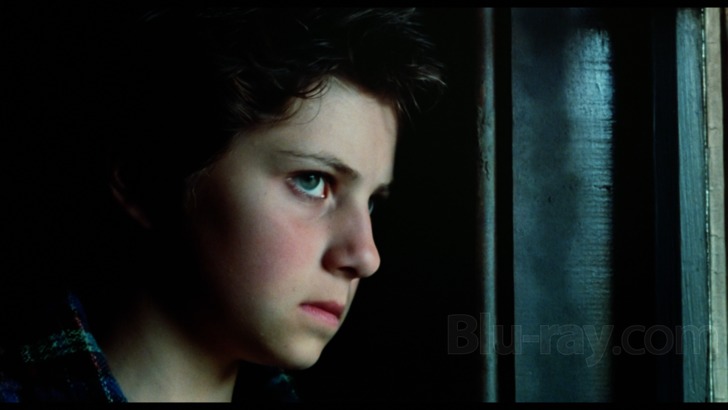
- Nick Roddick on Vigil (1080p; 13:22) is a really interesting piece with Vigil champion Roddick, who got to see the film before it was actually even properly finished. I say this with tongue planted firmly in cheek, but Mr. Roddick's appearance kind of reminded me of Ebenezer Scrooge after he's seen one of the ghosts.
- Country Calendar (1080i; 14:18) is an interesting archival piece from a long running New Zealand television show, with some fun footage of the film being shot on a real life farm in New Zealand.
- NZ Cinema: The Past Decade (1080i; 7:30) is an excerpt from a longer documentary, with this section focusing on Ward and Vigil.
- Trailer (1080p; 2:14)
Vigil Blu-ray Movie, Overall Score and Recommendation 
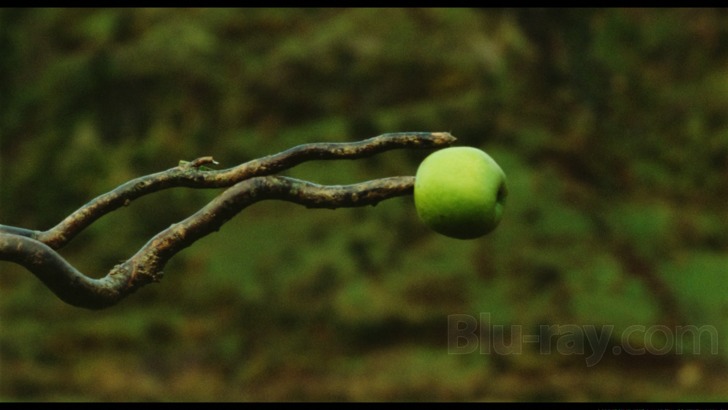
If I hadn't been so generally blown away by Fiona Kay's performance in this film, I might have given the overall effort a 3.5, since it does encounter some narrative hurdles and tends to wander a bit at times. But Kay really anchors this film as a really unique and unforgettable character, and Ward's visual sense buoyed by the excellent work of cinematographer Alun Bollinger really elevated this film for me personally above some of its tawdrier aspects. Technical merits are first rate, and Vigil comes Recommended.
Similar titles
Similar titles you might also like

Wild Tigers I Have Known
Standard Edition
2006

Faults
2014

Wendy and Lucy
2008

Rapture
Limited Edition to 3000 - SOLD OUT
1965

Pain and Glory
Dolor y gloria
2019

Mustang
2015

Murmur of the Heart
Le souffle au coeur
1971

Aquarius
2016

Ratcatcher
1999

Little Darlings 4K
Standard Edition
1980

Woyzeck
1979

Lilith
1964

The Club
El Club
2015

Funny Ha Ha
Slipcover in Original Pressing
2002

Novitiate
2017

Teachers
1984

Me and You and Everyone We Know
2005

Fat Girl
À ma sœur!
2001

Drum
1976

Victim
1961